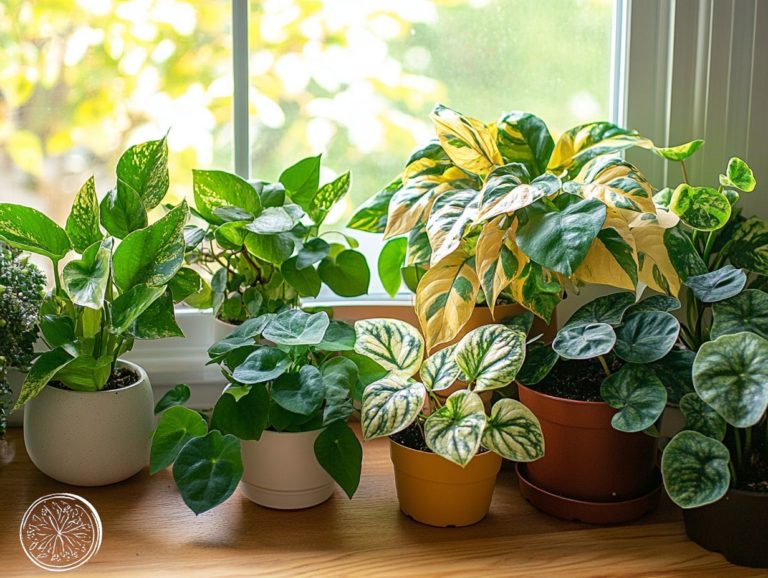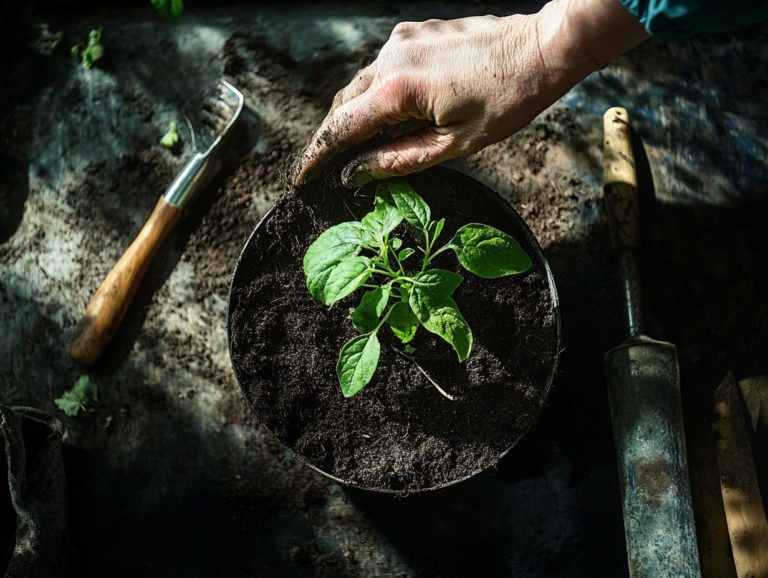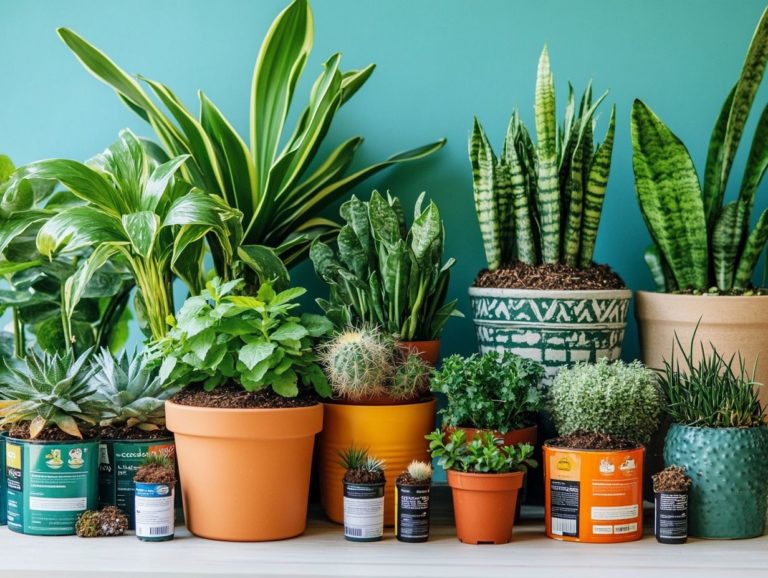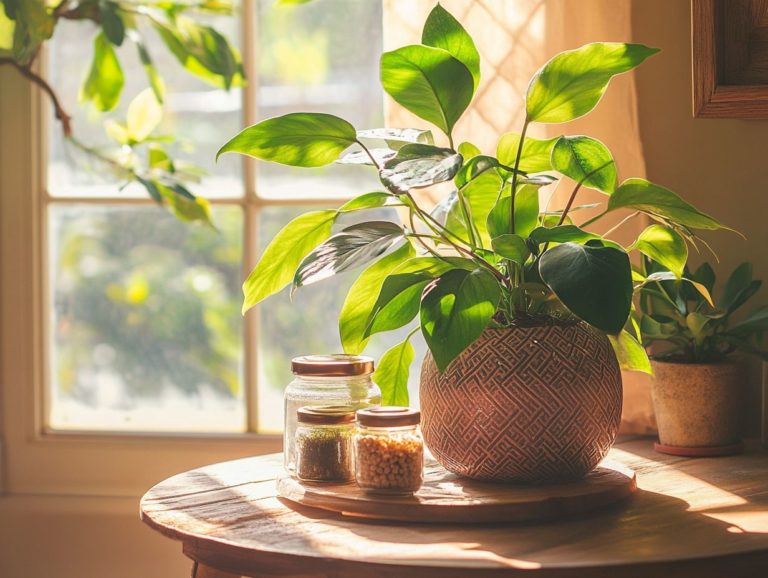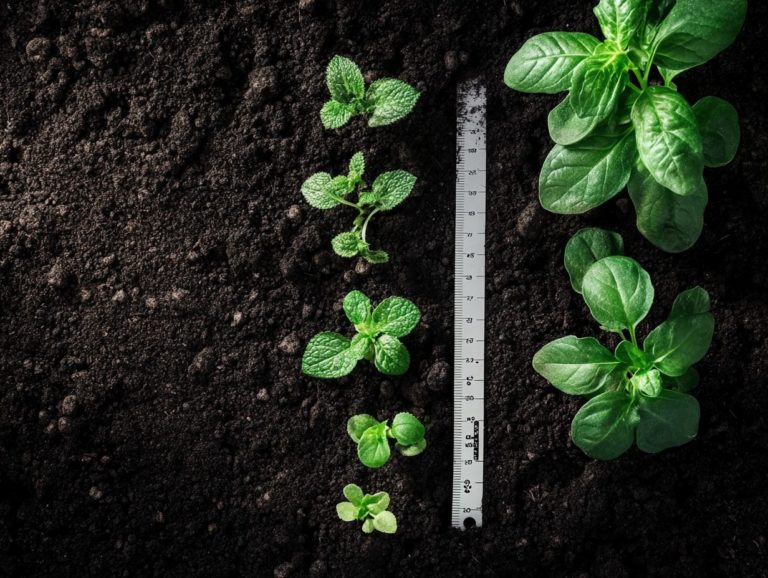Common Myths About Indoor Plant Soil
Indoor plant soil is frequently overlooked, yet it is essential to the well-being of your leafy companions and significantly impacts air purification.
This article delves into the true nature of indoor plant soil, dispels common myths, and guides you in selecting the ideal type for your houseplants.
You ll uncover practical care tips for nurturing healthy soil and explore alternative options that can enrich your indoor gardening journey. Get ready to take your indoor gardening experience to the next level, focusing on optimal moisture levels and light conditions!
Contents
- Key Takeaways:
- Understanding Indoor Plant Soil
- Myths About Indoor Plant Soil
- Choosing the Right Indoor Plant Soil
- Maintaining Healthy Indoor Plant Soil
- Alternative Soil Options for Indoor Plants
- Frequently Asked Questions
- What are some common myths about indoor plant soil?
- Is it true that all indoor plants can thrive in the same type of soil?
- Do indoor plants need to be repotted frequently?
- Is it necessary to add rocks or gravel at the bottom of plant pots?
- Can you use regular garden soil for indoor plants, or is specific potting soil necessary?
- Is it true that indoor plants do not need fertilizer if they have good soil?
Key Takeaways:
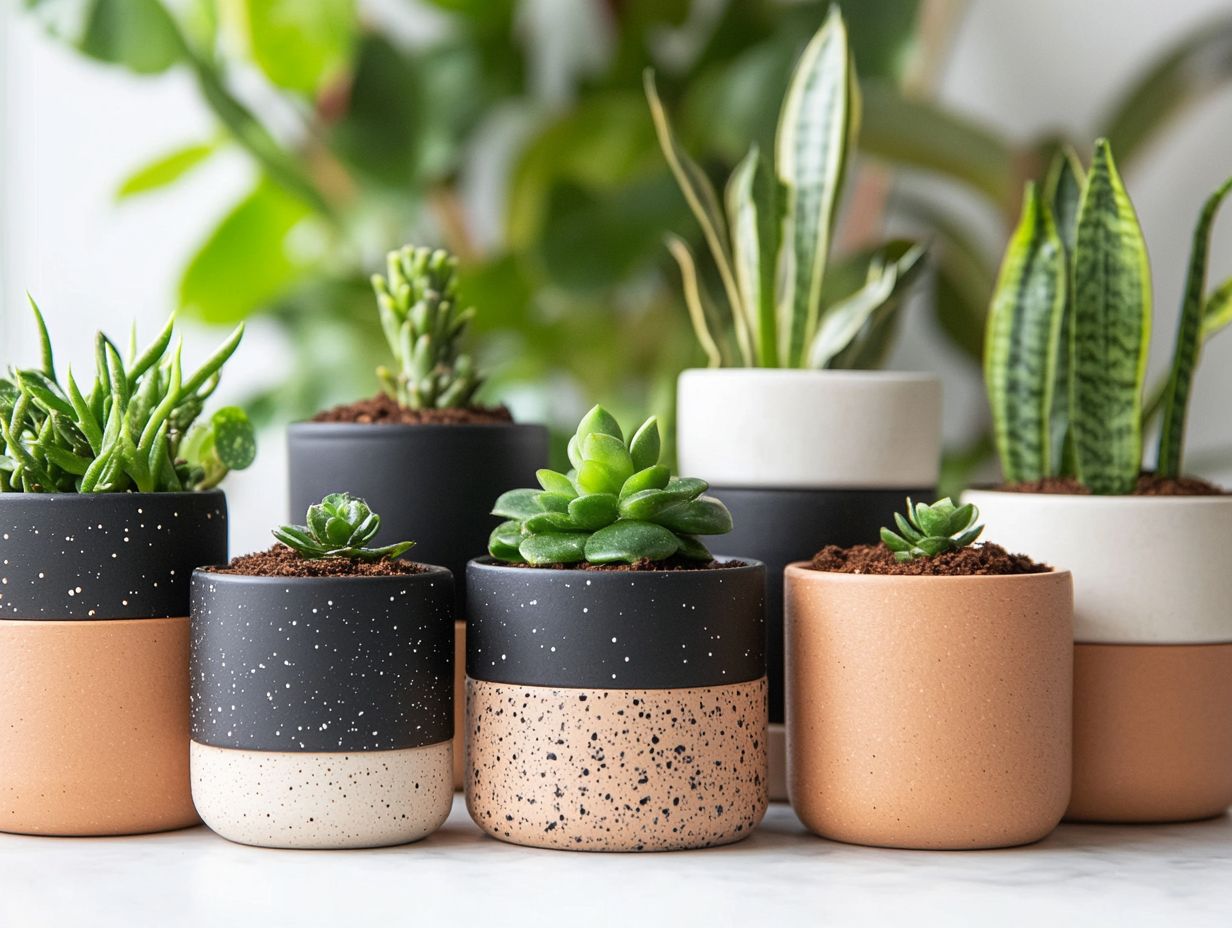
- Indoor plant soil is specially formulated to meet the unique needs of indoor plants, including factors like humidity levels and pot size. It is not the same as regular garden soil.
- Common myths about indoor plant soil, such as the need for frequent repotting or the belief that all houseplants thrive in the same soil, are often based on misinformation.
- When choosing the right soil for your indoor plants, consider water retention, drainage, and nutrient content. Proper care and maintenance are essential for healthy indoor plant soil.
Understanding Indoor Plant Soil
Grasping the nuances of indoor plant soil is essential for cultivating healthy growth and vibrant foliage in your houseplants, especially for varieties like African Violets and ZZ Plant.
The right soil composition significantly influences water retention, air circulation, and nutrient availability, all of which are vital for the flourishing of various indoor plants.
With many options available ranging from potting soil tailored for tropical plants to mixes designed for succulents like Crassula ovata it s important to consider moisture levels, humidity, and the specific requirements of each plant. This thoughtful approach will lead to optimal results in your indoor gardening journey and help avoid stunted growth.
What is Indoor Plant Soil?
Indoor plant soil is not just dirt; it’s a carefully mixed medium designed to provide the essential nutrients and ideal moisture levels that your houseplants need for optimal health.
This special blend typically includes organic materials like peat moss, compost, and bark, paired with inorganic components such as perlite or vermiculite to enhance air circulation, crucial for healthy root development.
By choosing the right indoor plant soil, you re providing a balanced environment that allows roots to flourish. Various types, like potting soil or seed-starting mix, come with unique formulations tailored to meet the specific needs of different plants.
When you select the ideal soil composition, you set the stage for optimal moisture retention and nutrient availability, which ultimately enhances the vitality and overall health of your indoor plants.
Myths About Indoor Plant Soil
You may encounter a variety of houseplant myths that can mislead even the most passionate gardening enthusiasts about indoor plant soil and its pivotal role in maintaining plant health.
For instance, the idea that all houseplants thrive in the same soil type or the belief that soil requires no attention can lead to misguided care practices.
Recognizing and debunking these common myths is essential for anyone aiming to cultivate thriving indoor plants, as misinformation can result in poor watering schedules and inadequate light conditions.
Start choosing the right soil today to see your houseplants thrive!
Debunking Common Misconceptions

Debunking common misconceptions about indoor plant soil can significantly elevate your houseplant care routine and enhance your understanding of light and humidity conditions.
You might think that all indoor plants thrive in the same type of soil, but in reality, each species has unique requirements that greatly affect their health and growth. Factors like humidity and temperature play a big role. For example, succulents like Crassula ovata flourish in a sandy, well-draining mix, while ferns prefer a moisture-retentive medium rich in organic matter that accommodates their watering needs.
Believing that repotting moving your plant to a new pot with fresh soil is unnecessary can stifle your plants’ development. Most houseplants, including popular varieties like African Violets and ZZ Plant, actually benefit from refreshing their growing medium. This allows them to access essential nutrients and ample room for root expansion.
Understanding these details will elevate your indoor gardening game!
Choosing the Right Indoor Plant Soil
Choosing the right indoor plant soil is vital for achieving optimal health and growth for your plants. It fosters robust root development. Several factors come into play when making this decision.
You ll need to assess the pot size and understand the specific requirements of your indoor plants. Consider the environmental conditions, including humidity levels and light conditions.
Choosing wisely will transform your houseplant care routine!
Factors to Consider
You must consider these key factors to help your plants thrive in their environment and avoid common growth problems.
These factors include pot size, light conditions, and humidity levels. Each plays a vital role in determining the ideal soil mix for your plants and ensuring proper watering. The size of the pot directly influences drainage and aeration. Larger pots need soil that retains moisture without becoming waterlogged, as this can negatively affect root health. Additionally, it’s important to be aware of common misconceptions; check out the top 10 urban myths about indoor plant pests to ensure you’re well-informed.
Light conditions guide your plant choices. Some plants thrive in bright spots and need well-draining, nutrient-rich soil. Shade-loving varieties do best in moisture-retentive mixes that support their growth.
Maintaining the right humidity levels is crucial for your soil selection. Plants in drier environments may need different soil types compared to tropical varieties. For instance, plants in dry conditions benefit from soils designed to prevent quick drying, while tropical varieties thrive in soils that retain just enough moisture without suffocating their roots. Understanding why soil quality matters for indoor plants is an essential aspect of plant care.
Maintaining Healthy Indoor Plant Soil
Keeping your indoor plant soil healthy ensures vibrant growth and keeps pests away! To achieve this, establish a precise watering schedule, monitor moisture levels closely, and ensure the soil remains nutrient-rich. This is vital for avoiding stunted growth.
This approach will significantly enhance your plants’ health and vitality, allowing them to thrive beautifully in your space.
Tips for Proper Care and Maintenance
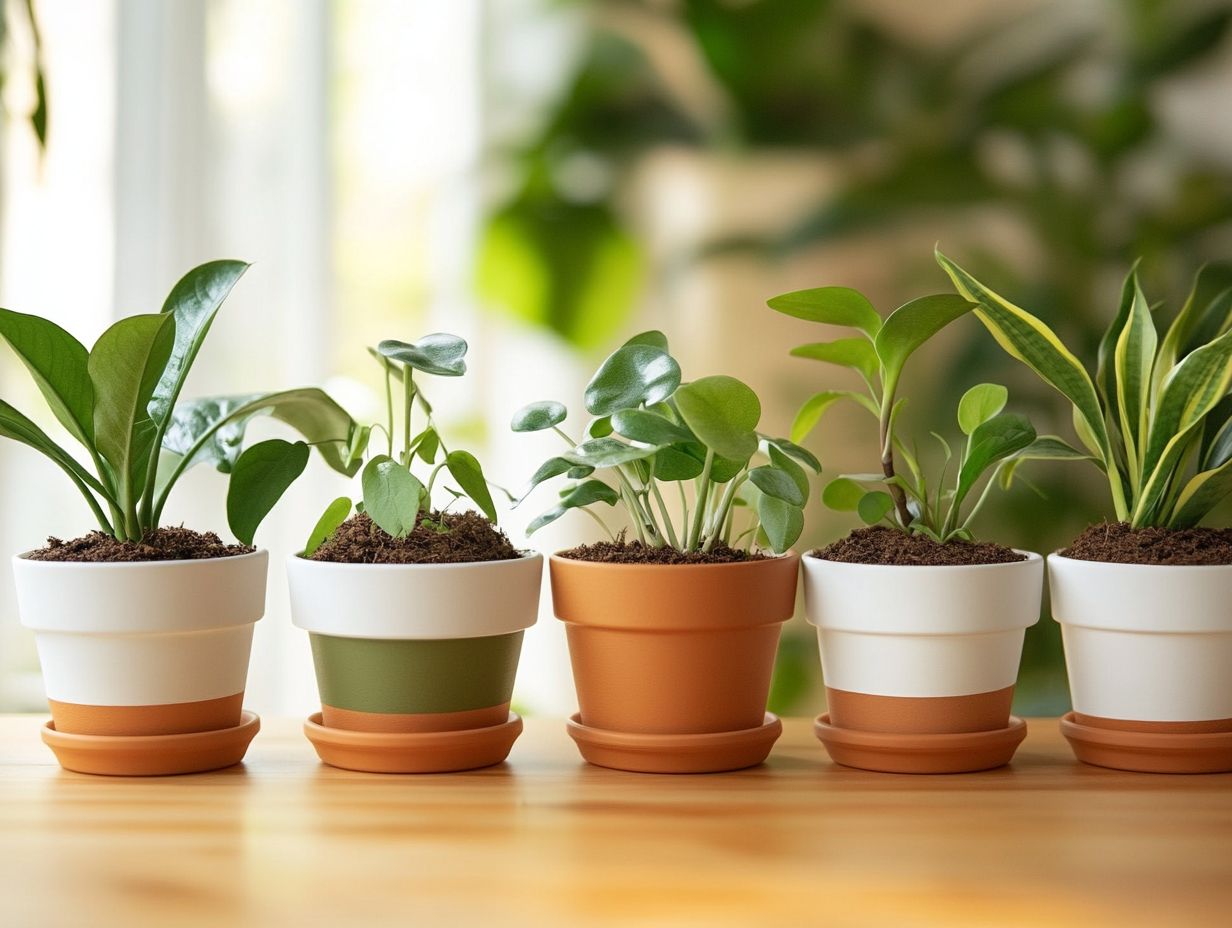
Proper care and maintenance of your indoor plant soil is essential for fostering healthy root development and avoiding growth problems. These problems often arise from inadequate light or humidity conditions.
To achieve optimal results, regularly monitor moisture levels. Water your plants only when the soil has dried out sufficiently to prevent issues like root rot. This practice helps prevent overwatering, which can lead to root rot and other complications.
Inspecting the soil is crucial. Look for signs of pests or diseases, such as discoloration or unusual textures. These may indicate underlying issues that could hinder plant growth.
Adding organic matter, like compost, can supercharge your soil, enhancing fertility and promoting the activity of tiny living organisms. This ultimately supports robust plant health and improves moisture retention.
Alternative Soil Options for Indoor Plants
Exploring alternative soil options for your indoor plants can significantly elevate their growth potential and overall health. These options provide benefits that traditional potting soil may not deliver, especially in terms of moisture levels and air circulation.
Consider alternatives like organic blends and coconut coir. These options enhance drainage, aeration, and moisture retention, making them perfect for a variety of indoor environments, particularly for plants that thrive under different humidity levels.
Embracing these alternatives could be the key to nurturing thriving greenery in your space.
Exploring Different Options and Their Benefits
Exploring various soil options reveals numerous benefits tailored to meet the needs of your indoor plants. Each soil type offers unique properties that contribute to healthier growth and improved moisture retention, which is vital for plant health.
Take coconut coir, for instance. It provides excellent aeration and serves as an eco-friendly alternative. It promotes root development by keeping the soil naturally fibrous and lightweight, which benefits plant growth. Organic soil, rich in nutrient-dense matter, fosters a beneficial microbial ecosystem that nourishes your plants, enhancing their vitality and air purification capacity. Understanding the top 7 indoor plant pest myths can further help in maintaining a healthy indoor garden.
On the flip side, perlite crafted from volcanic glass adds texture and enhances drainage, effectively preventing root rot. This is crucial for maintaining healthy indoor plants. By understanding these distinctions, you can curate the ideal soil mix that nurtures your thriving indoor garden and helps you avoid common soil issues affecting indoor plants.
Frequently Asked Questions
What are some common myths about indoor plant soil?
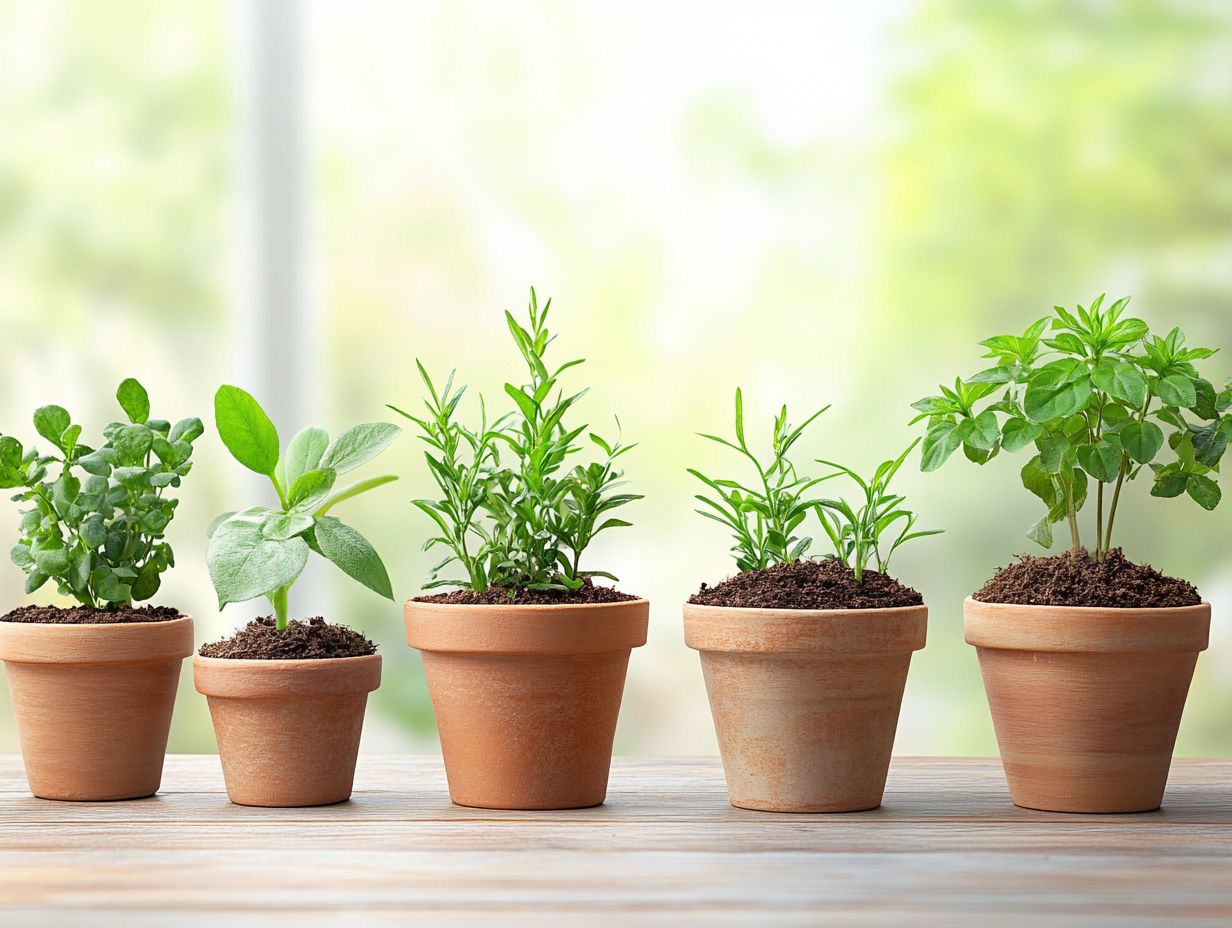
One common myth is that indoor plants don’t need soil. In reality, soil provides essential nutrients and moisture for plants to thrive.
Is it true that all indoor plants can thrive in the same type of soil?
No, this is a misconception. Different types of indoor plants have specific soil preferences. Using the wrong type of soil can harm their growth, leading to stunted development.
Do indoor plants need to be repotted frequently?
Contrary to popular belief, indoor plants do not need to be repotted often. In fact, repotting too frequently can shock the plants, affecting their health and growth.
Is it necessary to add rocks or gravel at the bottom of plant pots?
This is a common myth. Adding rocks or gravel at the bottom of pots can hinder proper drainage and lead to waterlogged soil, resulting in root rot.
Can you use regular garden soil for indoor plants, or is specific potting soil necessary?
No, using regular garden soil for indoor plants is not a good idea. It can harbor pests and diseases that harm your plants.
Regular soil may also lack the essential food they need for healthy growth.
Is it true that indoor plants do not need fertilizer if they have good soil?
This is a common misunderstanding. Even with good soil, indoor plants benefit from occasional fertilization.
Fertilization helps promote healthy growth and blooming!

